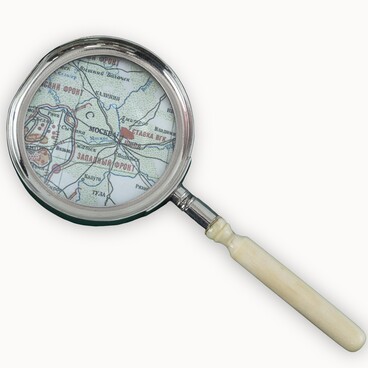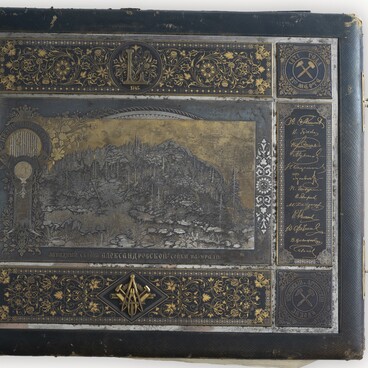The Grafonola (portable gramophone) of the model “Columbia Grafonola viva tonal 220” was released in 1908 by the American Columbia Graphophone Company. The portable gramophone without an external horn was enclosed in a wooden case lined with brown leather.
This is one of the earliest versions of the portable gramophone popular at the beginning of the 20th century. Such Grafonolas were internal horn alternatives to external horn disk graphophones (devices for recording and reproducing sound, an improved version of the phonograph).
The history of the manufacturing company is extremely confusing and dates back to 1880. At the time, the famous inventor Alexander Graham Bell received a $20,000 Volta prize from the French government. Bell used the funds to set up a research laboratory in Washington, DC with his cousin Chichester Bell and the engineer Charles Sumner Tainter.
Bell first intended to do sound experiments with telephones, but Edison’s phonograph soon caught his attention. He improved the phonograph and turned to Thomas Edison with a proposal to join forces in creating a more advanced device, but Edison rejected the proposal.
As a result, all developments came under the control of the Volta Graphophone Company, which later merged with the American Graphophone Company. The entity was under the control of a number of co-owners and had its headquarters in Washington.
In 1888, the famous entrepreneur Jesse Lippincott decided to create a monopoly on the phonograph trade, similar to the telephone system that existed at the time. Lippincott bought out Edison and American Graphophone Company, as well as Bell’s and Tainter’s rights to the graphophone.
However, his plan did not work, and after the entrepreneur’s death in 1894, both companies were declared bankrupt. The patents and companies returned to their former owners. In 1906, the American Graphophone Company changed its name to the Columbia Graphophone Company, and 12 years later split into two organizations. In the 1920s, one of them, the Columbia Phonograph Co, was bought out by a British subsidiary.
Until the end of 1925, all such machines reproduced sound by mechanical means only. The “Columbia Grafonola viva tonal 220” gramophone joined the funds of the Zlatoust City Museum of Local Lore on November 30, 2004 as a gift from a collector.
This is one of the earliest versions of the portable gramophone popular at the beginning of the 20th century. Such Grafonolas were internal horn alternatives to external horn disk graphophones (devices for recording and reproducing sound, an improved version of the phonograph).
The history of the manufacturing company is extremely confusing and dates back to 1880. At the time, the famous inventor Alexander Graham Bell received a $20,000 Volta prize from the French government. Bell used the funds to set up a research laboratory in Washington, DC with his cousin Chichester Bell and the engineer Charles Sumner Tainter.
Bell first intended to do sound experiments with telephones, but Edison’s phonograph soon caught his attention. He improved the phonograph and turned to Thomas Edison with a proposal to join forces in creating a more advanced device, but Edison rejected the proposal.
As a result, all developments came under the control of the Volta Graphophone Company, which later merged with the American Graphophone Company. The entity was under the control of a number of co-owners and had its headquarters in Washington.
In 1888, the famous entrepreneur Jesse Lippincott decided to create a monopoly on the phonograph trade, similar to the telephone system that existed at the time. Lippincott bought out Edison and American Graphophone Company, as well as Bell’s and Tainter’s rights to the graphophone.
However, his plan did not work, and after the entrepreneur’s death in 1894, both companies were declared bankrupt. The patents and companies returned to their former owners. In 1906, the American Graphophone Company changed its name to the Columbia Graphophone Company, and 12 years later split into two organizations. In the 1920s, one of them, the Columbia Phonograph Co, was bought out by a British subsidiary.
Until the end of 1925, all such machines reproduced sound by mechanical means only. The “Columbia Grafonola viva tonal 220” gramophone joined the funds of the Zlatoust City Museum of Local Lore on November 30, 2004 as a gift from a collector.





